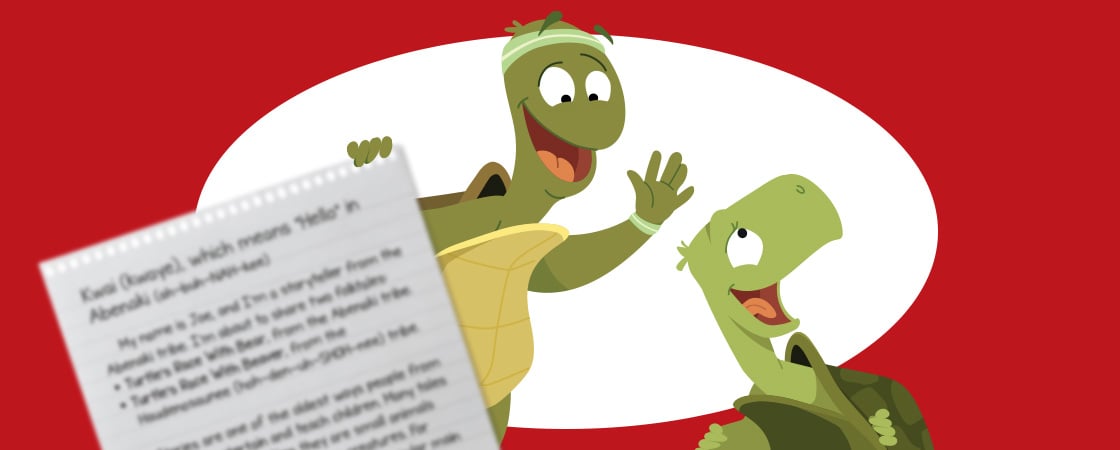Courtesy Joseph Bruchac
Kwai (kwaye), which means “Hello” in Abenaki (ah-buh-NAH-kee)
My name is Joe, and I’m a storyteller from the Abenaki tribe. I’m about to share two folktales:
- Turtle’s Race With Bear, from the Abenaki tribe.
- Turtle’s Race With Beaver, from the Haudenosaunee (hoh-den-uh-SHOH-nee) tribe.
Stories are one of the oldest ways people from both tribes entertain and teach children. Many tales are about animals. Often they are small animals that defeat bigger and stronger creatures. For both Native nations, one of the most popular main characters is the clever one called Turtle.
As you act out the plays, think about what lessons you can learn from Turtle in each story.
Peace,
Joe Bruchac

